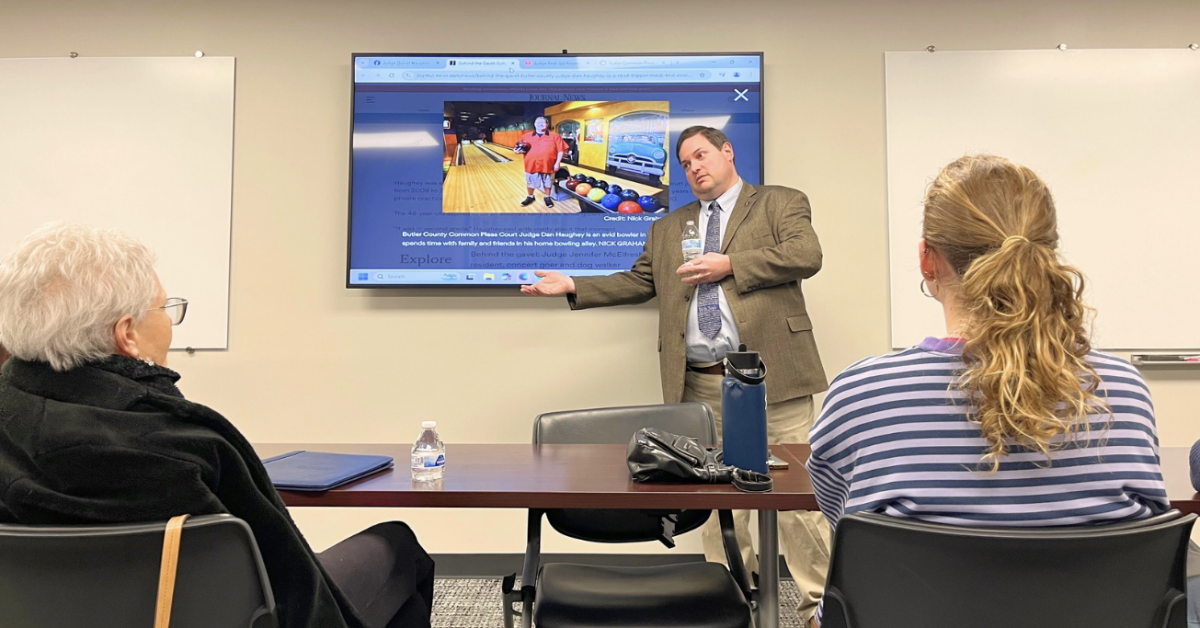This summer, construction on U.S. Route 27 and state Route 73 for Miami University’s gateway project prompted a question for Oxford City Council from some irate members of the public: “Who owns these roads?”
To some of those stuck in traffic behind detour signs, orange barrels and flaggers, a gateway to let people know they had reached Miami hardly seemed worth the aggravation. Yet, as city officials pointed out, Miami can pretty much do whatever it wants with the roads running through campus.
Even though the gateway project includes changes to state Route 73, Miami does not need a permit from the state to construct on roads within Oxford city limits, according to a representative from the District 8 Right of Way Permit Office.
Miami is not the only university to pre-date the roads built through it and the town around it, but the division of ownership between school and city varies from case to case.
“You’d have to look at how the property is deeded in that area,” said Jodi Elsass-Locker, assistant legal counsel of the Ohio Department of Transportation. According to her, it is an issue between the university and the city, not the state.
“[Miami is] doing [the project] with their own funding,” City Manager Doug Elliott said. “Miami has maintained that they own those roads — they were there before the city, and [Miami] never deeded them over to the city.”
Steve McHugh, city law director, meets with Miami’s legal counsel personnel. McHugh said they claim that the part of the road located on campus is Miami-owned, even if the route overall is state-owned.
“Miami takes the position that it’s a state route on their street, on their property, because of the original land grant,” McHugh said.
Miami didn’t need permission from the city to dig up the roadways, re-route traffic or install a traffic island, even though the city pays to maintain those same roads. The question of who owns the roads is a murky one.
The answer is unclear enough that the city could likely have grounds to take Miami to court over it. However, Mayor Kate Rousmaniere said that it is highly unlikely that city council would do so, either over this project or another, for a couple of reasons.
Firstly, Oxford desires to maintain a good relationship with the university as it is the city’s largest employer and a close collaborator.
Secondly, there is the case of the giant rat that resulted in a legal precedent in Miami’s favor: Laborers’ International Union of North America, Local 534 v. Hodge.
In 2011 during a union dispute between laborers and the university, the union tried to put a 25-foot inflatable rat on a sidewalk parallel to Patterson Avenue but was stopped by Miami University police. The laborers sued over a free-speech violation, but U.S. District Judge Michael Barrett ruled in the university’s favor, deciding that the sidewalk and the road were university property and classified as a limited public forum.
“Patterson Avenue is not adjacent to the City of Oxford,” the final ruling read. “Instead, Patterson Avenue runs through the middle of Miami University’s campus, making it indistinguishable from the University.”
With this ruling as precedent, it is likely that the same would be said for any other roads on campus. Despite this, the city still is responsible for maintaining those roads.
“This has to do with relationships as much as law,” Mayor Rousmaniere said. “No city wants to undercut or damage their largest employer. College towns all over the country wrestle with these issues.”
The university is within its rights to complete these projects without formal permission, but the Miami physical facilities department still presents to city council and consults with Oxford police as part of the process.
For some residents unhappy with construction that disrupts the flow of traffic, it is frustrating to not have much of a say in the decisions Miami makes. Cody Powell, associate vice president of facilities planning and operations at Miami, acknowledges that frustration and recognizes that it is a part of many projects.
“There’s always trade-offs in everything that we do,” he said. “We have to figure out what’s a balance that provides safety for the students, but not make it so disruptive that residents can’t get to where they need to be.”










